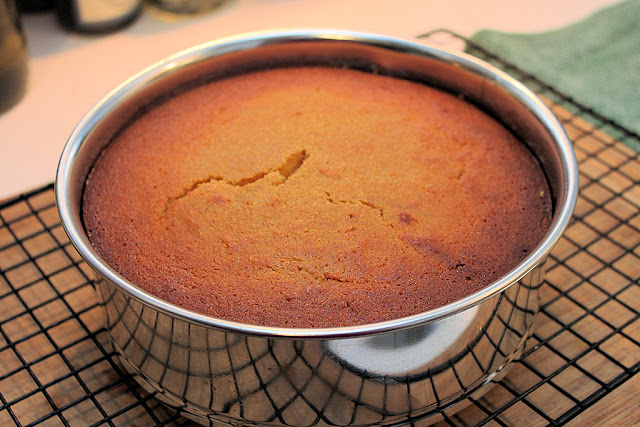This recipe was part of my "cook the pantry and the crisper" effort this week. After making two cakes with almond flour, I had a surplus. I also had a just-passed-prime, but still in great shape, pound of green beans. Searching "green beans" and almond meal". I found this recipe on Clotilde Dusoulier's "Chocolate & Zucchini" site. Ms. Dusoulier adapted this recipe from
Rose Carrarini's (of Rose Bakery) book, "
Breakfast, Lunch, Tea: The Many Little Meals of Rose Bakery".
 |
| Although not as pristine as when i bought them, these were super crunchy and fresh tasting. |
It's a pureed soup of green beans, aromatics and vegetable stock thickened with ground almonds. Green beans and almonds taste great together and using ground almonds as a thickener is a win for the gluten-intolerant. The resulting texture isn't silky smooth as most pureed soups, but the combination of flavors is very good. It's not a BIG! GIGANTIC! flavor-buster soup, but not everything has to be - just great ingredients and a lovely flavor. I ate this with salad and cheese toast.
In my version, I use leeks instead of onions and celery with no carrots (as there were none in the crisper). I prefer leeks over onions in a lot of soups and love the flavor. Leeks can take some cleaning, as there can be a lot of dirt in between the layers but I generally clean dirt of of the outside, trim off the ends, and the fibrous dark green parts (which I save for stock), cut them as called for and then wash them by soaking and swishing them around in cold water, letting them sit for a couple of minutes to let the dirt drop to the bottom of the bowl then drying them off in a salad spinner. This method is easy and fast.
 |
In most instances, I trim and cut up my leeks and then I wash them.
Just remember to clean your board and knife before moving on to the next vegetable. |
Vegetable Stock: I cooked both wild rice and barley this week and used the left-over water as a basis for vegetable stock. Water in which I've cooked chickpeas also make a really tasty starter for stock. To that I added the green tops and trimmings from the leeks, some celery leaves, a bay leaf and a few stems of thyme. During the week I throw appropriate (where the veg isn't too strong-flavored or bitter and would overpower the taste) trimmings into a freezer bag and stuff it in the freezer. I don't use them if they've been in the freezer over two weeks.
The cooking water from many beans and grains - if you don't use it in the dish for which you cooked them - make a good base, too. White or light-colored beans - especially cannellini - tend to be good. I don't use bean cooking water when the resulting product is strongly colored or too cloudy. I let the left over water from the barley sit for about a half an hour and let the starch particles sink to the bottom while pouring off the less-cloudy water.
Vegetable Stock Guidelines: Heat up a big pot on the stove on medium-high. Add a couple of tablespoons of olive oil. Throw in the left-over vegetable trimmings that you have cut up roughly (the smaller the better) and a couple of pinches of salt. Depending on your preference, cook them without coloring them or caramelize them a little, adjusting the heat as necessary, along with 1 or two smashed cloves of garlic. Add a bay leaf, a few pepper corns, a tablespoon of tomato paste (if you have some) and cook for a few more minutes. Add half-dozen sprigs of parsley and a few sprigs of other herbs (if you have them). Add the left-over bean or grain cooking water, or just water to a ratio that works for the amount of vegetables and trimmings. Commonly, a pound of vegetables to a gallon of water, but adjust down (or up) depending on your vegetables.
Bring the pot to a boil, turn the heat down and cover so that the liquid comes to a medium simmer. Let this cook, covered, for 45 minutes to 1 hour. It doesn't help this to cook it longer and by 1 hour, you've extracted the maximum flavor from the vegetables. Take off the heat and allow the stock to cool to lukewarm. Set a large strainer over a bowl and ladle the solids into the strainer (pushing down on them a little to extract so that you can pick up the pot and pour the remainder of the liquid through the strainer. Push down on the remaining solids a little to exact any extra liquid. Allow this to sit for an hour or until completely cool. Pour this liquid, making sure that any sediment remains at the bottom of the bowl, through a double-layer of cheesecloth. Cover and store in refrigerator for 2 days or in an airtight container (or multiple containers, in smaller quantities) in the freezer for a couple of months.
 |
(LEFT) take the pan off heat when the almond meal is about this color. Have a plate ready (to cool it down)
because it will continue to cook. (RIGHT) Toasted and un-toasted almond meal comparison. |
RECIPE: GREEN BEAN and ALMOND SOUP

































